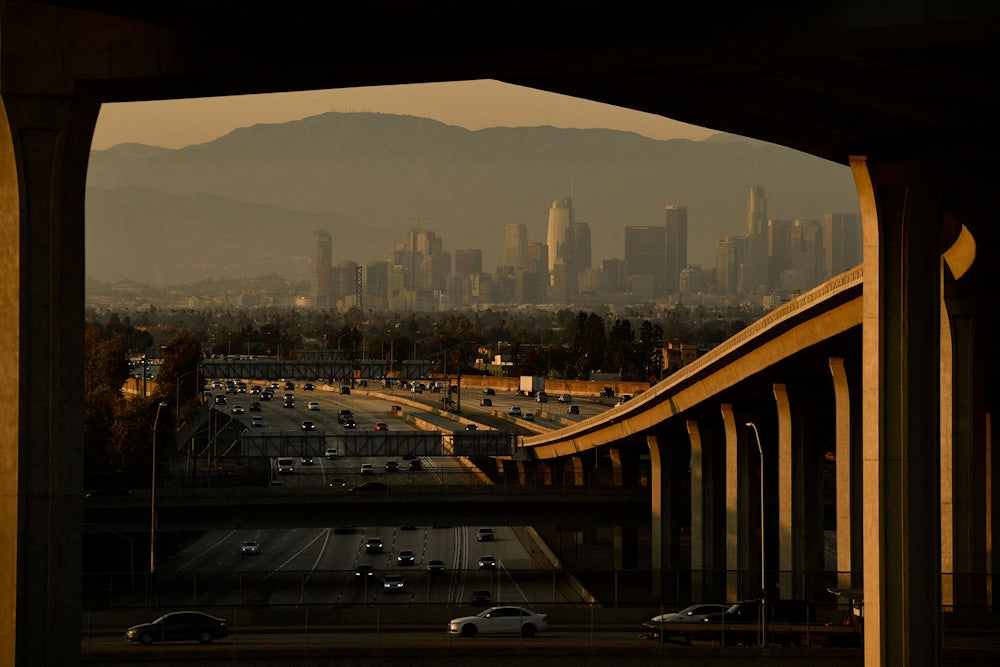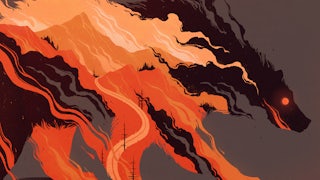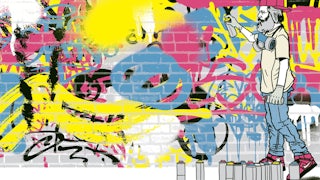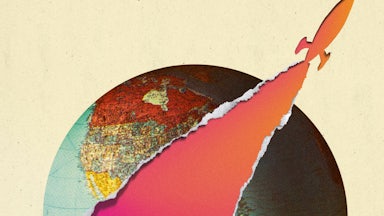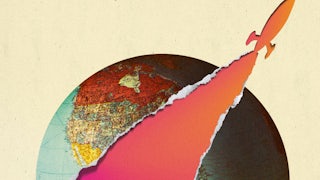A brief survey of recent films and books reveals an insatiable appetite for dystopianism: We cannot get enough social breakdown, climate apocalypse, and natural disasters. Thirty years ago, this kind of doomsaying was out of fashion. The Cold War was over—gleefully regarded by some as the End of History—financiers were falling in love with technology companies, and offshoring industrial production was remaking global trade. Amidst this largely jubilant backdrop an outsider academic, Mike Davis, wrote a terrifying dissertation about a militarized Los Angeles riven with class tension. His dissertation was rejected by the University of California, Los Angeles but was published in 1991 as City of Quartz with the radical publishing house Verso Books. It came just months before Rodney King was brutally beaten by the Los Angeles police, paving the way for an urban uprising at a scale not seen since 1968 and it established Davis as one of the foremost left intellectuals writing on cities.
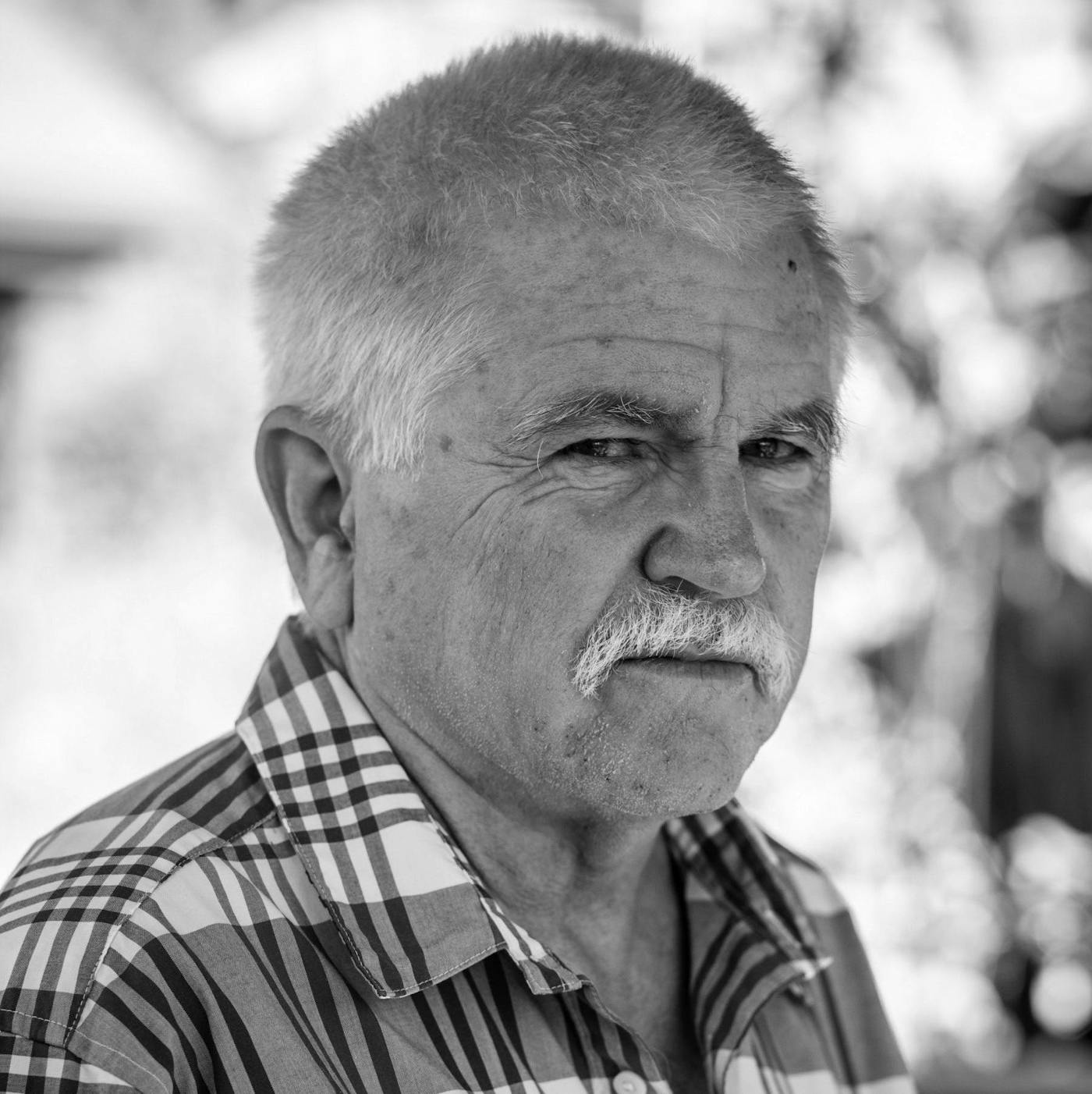
Davis died yesterday at
the age of 76. He was beloved among progressive geographers, city planners, and
historians for being an outsider in the academy who wrote with an intensity
that set him apart from other scholars. Despite teaching at a number of major
universities, Davis never acceded to their ideas about professionalization,
toeing the company line, or championing social science over activism. This is
not surprising given his biography: He was born to a working class Welsh-Irish
family in Fresno, California, in the 1940s. He dropped out of university and got by as a
butcher and truck driver while organizing for unions, Students for a Democratic
Society, and many other groups, mostly in Southern California. Eventually, he
returned to university after a particularly violent Teamsters strike of bus
drivers in 1973 in which union members considered hiring a hitman to kill
scabs. He spent time in the U.K. with other New Left writers authoring a book
called Prisoners of the American Dream (1986) before returning to
graduate school in history at UCLA where his doctorate dissertation was declined.
Disillusioned with the academy and its refusal to accept impassioned and
opinionated writing as “true” scholarship he returned to truck driving in the
late ’80s.
Eventually, after the publication of City of Quartz and his subsequent books, Davis held a number of academic positions, including full professor, but always begrudgingly with a skeptical relationship to corporatized American universities. Davis’s style reflects the pedigree of hardscrabble Southern California that was markedly different from his Ivy League-educated colleagues at places like the University of Southern California and the University of California, Irvine. He was at once erudite and bellicose. He could be a staid human geographer explaining the agricultural economics of 1870s India (in Late Victorian Holocausts) and a potboiler noir writer in the vein of James Ellroy or Walter Mosley, when describing how Harry Chandler wrested control of Los Angeles (in City of Quartz). Indeed, in a recent interview he wondered out loud why street gangs did not murder the first gentrifier they saw in order to have a chance to save their neighbors from displacement.
Like many activist academics, more interested in Justice for Janitors than publishing in highly-cited journals, Davis was controversial with the more traditional occupants of the ivory tower. When his dissertation was published as City of Quartz, describing the cultural and economic history of Los Angeles that led to massive economic inequality, he was criticized by some (including The New York Times) for a kind of L.A. provincialism. Yet, in his later works such as Planet of Slums, a survey of housing insecurity and urban immiseration on every continent, he was attacked for the breadth of his research with many specialists complaining that he over extended himself and got details wrong. While his colleagues griped, his readership grew. They were attracted by his explanatory powers as well as his unabashedly left perspective written with the passion of someone who saw the world falling apart. Whether covering the marginalization of people of color in L.A., climate change and drought, or the rise of informal urban housing (shantytowns, favelas, tent colonies in both wealthy countries and the global south), Davis often had a key point to drive home: Conditions in cities are getting worse, not better.
An indispensable legacy of Davis’s work is the healthy skepticism of managerial elites who promise that new technologies or Fordist/Taylorist organizational principles will solve our collective social and economic problems. He demonstrated this in his work on colonial management of crops in Late Victorian Holocausts, showing that at precisely the moment when colonialism ramped up (the 1870s), creating larger markets for agricultural goods, famine was rife, killing tens of millions in places under colonial control. He was an early voice against twentieth-century debt traps for developing countries in which loans are granted using public assets as collateral, often leading to the privatization of those assets. Like his contemporary Doreen Massey, a radical feminist geographer from the U.K., he makes clear that natural disasters are moments when rentier capitalists rally, buying even more vacant land, farms, and housing, to concentrate wealth no matter how catastrophic the results are for the poor and vulnerable.
Davis’s voice on urban managerialism is nowhere clearer than in Ecology of Fear (1998): an investigation of disasters in Los Angeles that shows both the fragility of American cities as well as the overreach of surveillance, fortification, and policing that he saw in the mid-’90s and which had only grown in the preceding 25 years. In a similar jeremiad essay for New Left Review in 2010 entitled “Who Will Build the Ark,” he laid out his fears for cities in the twenty-first century: “Where urban forms are dictated by speculators and developers, bypassing democratic controls over planning and resources, the predictable social outcomes are extreme spatial segregation by income or ethnicity, as well as unsafe environments for children, the elderly and those with special needs.” While disasters are moments of dispossession for the poor, the property of the wealthy is protected far more efficiently even if it is in environmentally untenable locations, a theme that Davis explores in the telling title of a chapter from Ecology of Fear called “The Case for Letting Malibu Burn.” Put simply: The social costs of maintaining mansions on the fire-prone cliffsides of eroding beachfronts is just not worth it. Scarce resources should not be deployed for those who need them least.
Looking back on Davis’s career shows both an alarming lack of progress on the issues he cared about—climate change, inequality, and urban conflict—as well as a reorientation of academia toward his style of engagement. In the late ’80s, when Davis was in graduate school, many urban planners were still discussing Los Angeles as a kind of aberration: a car-centric sprawling collection of neighborhoods with no center, knit together by mega highways. By the end of the 1990s, the polycentric and suburban city was regarded as the paradigm of U.S. urbanism.
Similarly, scholar-activists were still something of a novelty when Davis was coming to loggerheads with UCLA over his opinionated dissertation that channeled ideas from history, cultural studies, urban planning, and geography. Now, interdisciplinary work is more accepted and being socially conscious is all but a necessity in the academy (although, arguably, more discussed than acted upon). More specifically, the political ecology that Davis wrote about has morphed from a niche concern to a major field of interest: how natural resources were appropriated, managed, and monetized (often through naked force by colonial powers) is the original sin of today’s global economy. Until this sin is addressed we can neither make meaningful progress toward ameliorating poverty nor tackling climate change.
The Los Angeles that Davis describes in his books is often one of elites who run the show: Davis, like the mid-century sociologist C. Wright Mills, put forward a view of power that can sometimes feel like a cabal in which the wealthy divide up the world from their swimming pools and over golf while poor people sweat it out manicuring lawns and unclogging drains. Los Angeles has a robust history of political organizing in the garment industry, immigration reform, and shipping, but Davis shows the nearly insurmountable odds against workers given the hoarding of wealth in the city.
He was a Marxist, not a Foucauldian, and micro acts of resistance to an increasingly rapacious structure of financialized capitalism—particularly in housing markets—were of little interest to him. Many other scholars celebrate minute reappropriation of urban space or creative subversion of the status quo—edgy murals, dumpster diving, guerrilla gardening, etc.—but these acts were not militant enough for Mike Davis. He wanted people to fight back not with creative uses of the city but in the streets (as his final magnum opus written with Jon Wiener about queer, feminist, and Chicana activism in L.A. in the 1960s—Set the Night on Fire—shows). Like many contemporaries involved in the protests in the mid to late ’60s, including large-scale unrest such as in Watts, Davis was frustrated with the timidity and narrow scope of contemporary activism. In his final years, it was perhaps a relief to see that many others were waking up to the conflagration around them caused by the climate emergency, democratic breakdown, and a new Gilded Age of American plutocracy.
It is fitting and somber that Davis’s last book, on the urban uprisings that lit Los Angeles on fire in the 1960s, was published just two years after the Woolsey Fire singed the very center of L.A., and the Camp Fire (in Northern California) became the worst blaze in California history. His books make clear that social and ecological problems are occurring hand in hand and we can learn from the considerable history of colonial and corporate avarice degrading the environment from the Industrial Revolution onward. Davis was committed to showing his readers a kind of bleakness that was neither voyeuristic nor moralizing but overpowering in its scope and scale. As a truck driver turned geographer, he knew that there was a lot of road to cover for people to see just how human activity has depleted our landscapes. He tried to show his readers that grim reality in every sentence.
